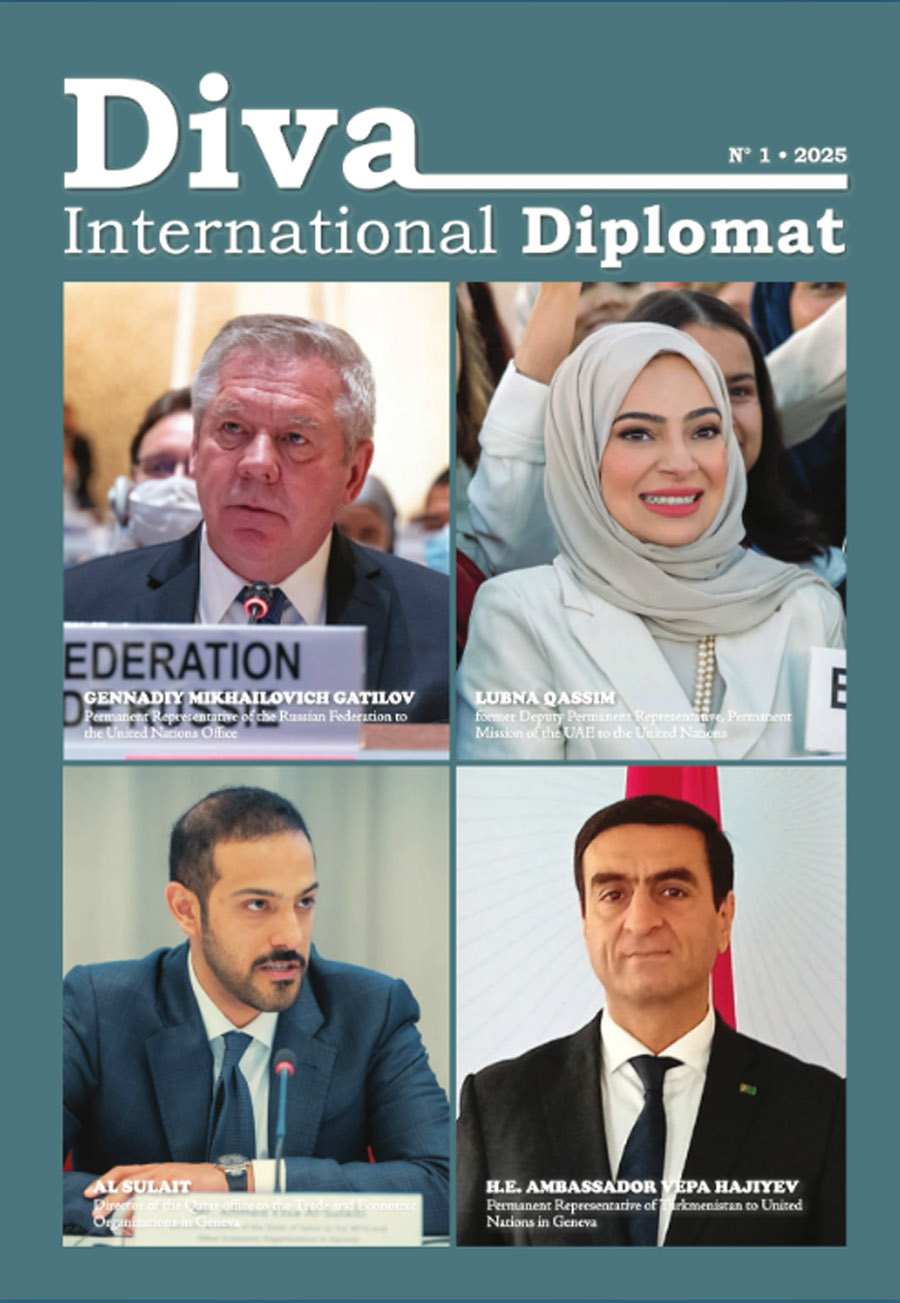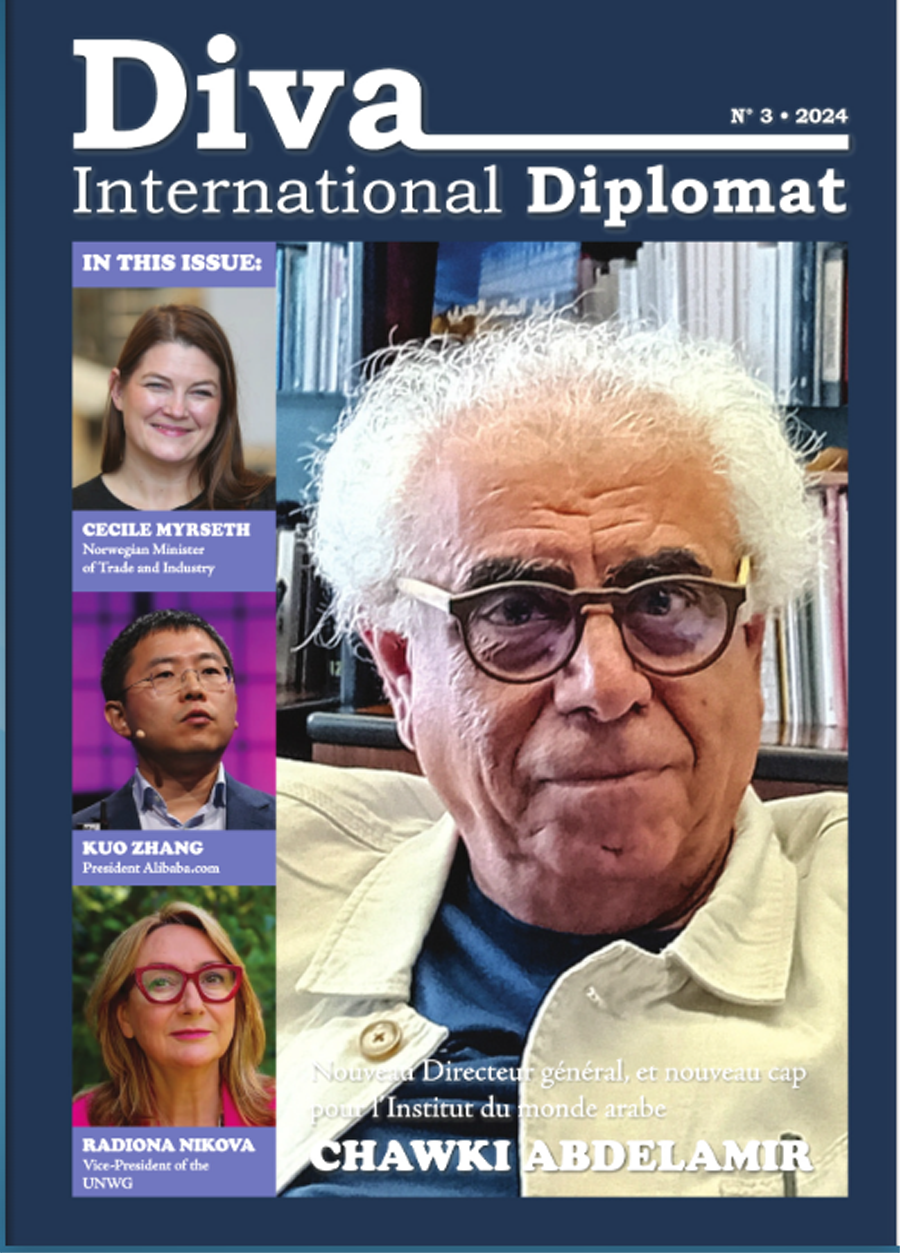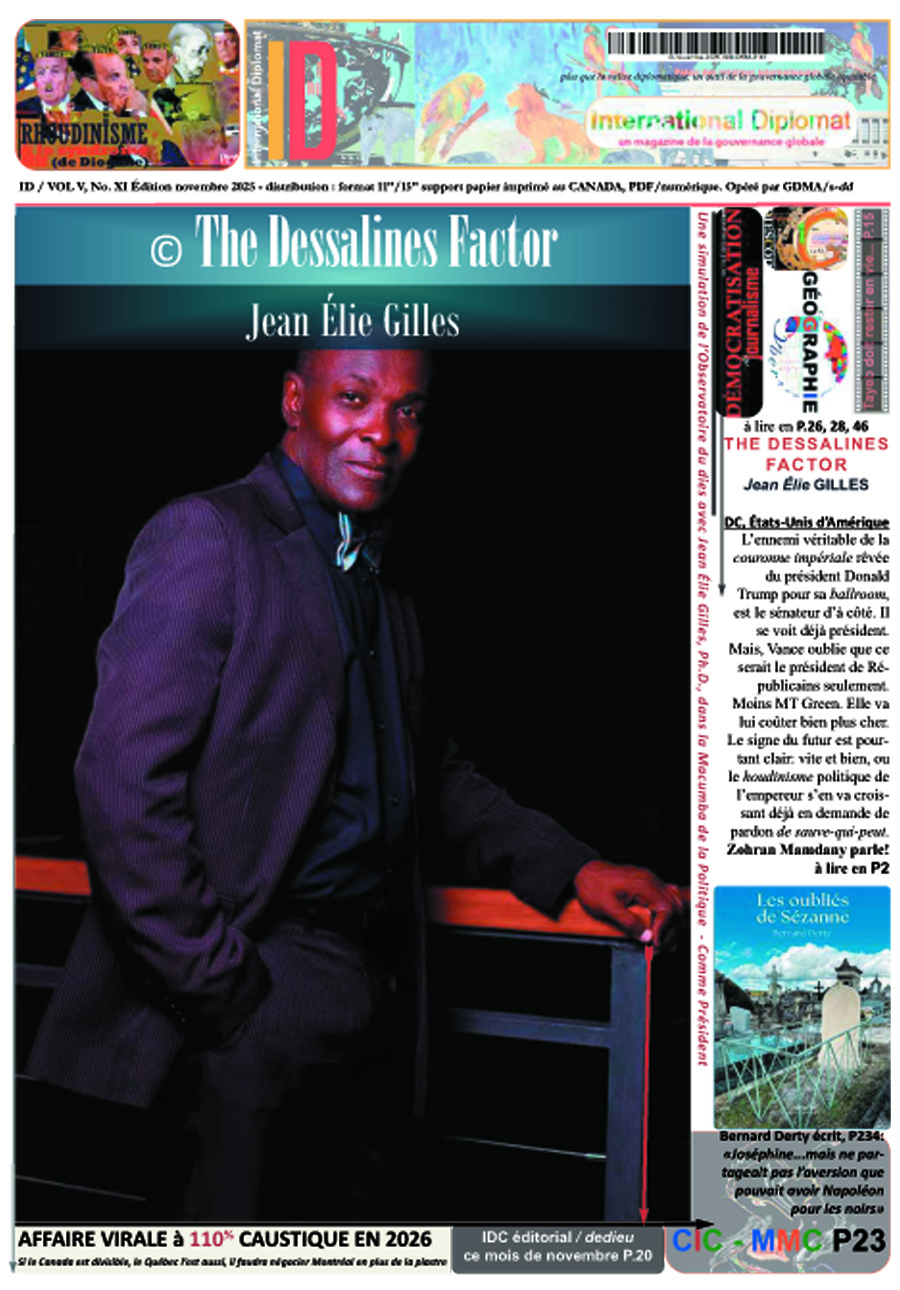
WOMEN IN MULTILATERAL DIPLOMACY BY SUCHADA KULAWAT
Imagine Rome without the Vatican. As a peace envoy, Catherine of Siena was not always successful. But she influenced Pope Gregory XI’s 1377 decision to return the papacy to Rome from Avignon — despite her criticism of the Church politics.
On a slippering slope, Catherine of Siena negotiated peace between the Florentine Republic and papal states. The Pope initially ignored her. The Florentines disowned her as their ambassador.
Yet her political advocacy to promote cooperation among leaders of divergent views remains a timeless device in multilateral diplomacy and any peace process.
Six centuries later, the story of women in diplomacy is often disputable.
Some of the disputed questions: When and where did the story begin? It depends. Whom you ask and how you define “diplomacy” often colors the story.
For some, Catherine of Siena, later canonized as Saint Catherine of Siena, is among the world’s first woman diplomats. Not all agree.
Some think the story of women in diplomacy began with the 1915 International Congress of Women and the delegations of women, led by Jane Adams and Emily Green Balch, in their peace missions around Europe to engage with stakeholders on how to end World War I.
“The question of peace is a question of terms,” said Balch, “The only way to bring about lasting peace is to be actively engaged in diplomacy and negotiation, understanding the needs and fears of all parties involved.”
Bach’s words may sound like an excerpt from today’s conflict resolution textbook. But male experts are normally cited as “the founders of conflict resolution.”
And World War I victors agreed on a “negotiated end” of the war with no mention of the woman peace delegations. It’s not the first or the last time that women’s role in the history of war, peace and diplomacy has been absent and diluted – or distorted.
The core historical narrative of international politics, experts say, “remains notably depleted of women.”
The good news: Today, more experts have started their myth-busting operations to rewrite the story of women in diplomacy, peacemaking, politics and trade.
Beyond the trans-Atlantic world, certain revisionist historians now argue that prior to the European colonial quest, the political systems and traditions in some regions of the world were matriarchal, with countless female leaders in diplomacy, politics and trade.
An example: When Chinese, European and Persian traders reached the Kingdom of Ayutthaya, or today’s Thailand, from the 14th to 18th century, they were rather surprised — and seemingly annoyed — to find that their counterparts were women, with whom they had to negotiate trades and navigate local politics.
“All the affairs are managed by their wives, they all follow the decisions of their wives because the mental capacity of their wives certainly exceeds that of a man,” said Chris Baker, an expert on Thailand’s history, recounting a Chinese diplomate’s record of the 15th century Ayutthaya’s custom.
Certain experts maintain that in the diverse region of pre-colonial Southeast Asia, there were more than 200-woman political rulers in different kingdoms and empires.
Some historians now believe women in certain parts of Africa and Asia were movers and shakers in international relations long before the creation of Enlightenment political thoughts and “the world order.”
Others disagree. Many agrarian societies in Africa and Asia, they argue, have been male- dominated.
Both arguments may be right, depending on the period they begin the women-in-diplomacy story.
For now, most experts agree on one thing: The narratives on the history of women in diplomacy have been “Euro-centric.”
The world has yet to come up with a new version of women-in-diplomacy history that truly cuts across all regions, countries and cultures.
The digital age, some believe, might lead to the real “collapse of contexts,” making the story of women in diplomacy, peacemaking and statecraft more universal — multi-civilizational and kaleidoscopic.
Amidst today’s theatric shift of the global order, the history of women in diplomacy continues to evolve despite seismic challenges to multilateralism.
As a multilateral body, the United Nations (UN) now sees diplomats, junior and high-up, and nongovernmental advocates, men and women, young and older, from 193 countries of diverse cultures, reshaping the women-in-diplomacy history while redefining “diplomacy” with these three main narratives.
First, it’s no longer the history of women, but of humankind, men and women. Why? Because the future of peace and humanity depends on it, proponents say.
The world that refuses to benefit from the talents of half of its population, or some four billion men and four billion women, cannot overcome today’s transnational challenges or move towards sustainable development and peace, gender advocates argue.
“Investing in women is investing in peace. Empowering women is empowering prosperity for all,” said Retno Marsudi, Indonesia’s former Foreign Minister and career diplomat.
With social media as the tail wind for public diplomacy, today’s gender agenda is cross-regional, intergenerational and gender inclusive, for both women and men. Men’s role is critical in the pursuit of women’s rights, advocates say.
The gender narratives now highlight the indispensable roles of feminist fathers, brothers and colleagues who push the gender equality agenda forward in their homes, communities and nations across the globe.
“My brother helped inspire me,” said 10-years-old Ishani Desai, following her essay reading on this year’s International Women’s Day, 8 March, in the UN General Assembly (UNGA) Hall.
“In the future generations,” she hopes, “more girls will be able to become leaders. and “they will not only be someone in the world but powerful change-makers in every field.”
More woman diplomats now opine that while other woman diplomats or “strong women” in their families have been their role models, their male mentors’ support, in the family or at work, are pivotal for their career advancement.
“Men have an essential role in breaking toxic stereotypes – and modelling behavior for boys and adolescents that normalizes the rightful equality of women and girls,” Dennis Francis, former President of 78th UNGA, said on 24 June last year, the International Day of Women in Diplomacy, designated by the UNGA since 2022.
Around the world, the new narrative on men’s role as “gender champions” is gaining traction in policy fora, grassroots movements, individual activism and arts. “To Kill a Tiger,” an internationally acclaimed documentary film, portrays a father’s fights for his daughter’s rights — against social norms and legal challenges.
A key strategy for gender advocates has been “to inspire confidence and drive of young women and girls to achieve their fullest potentials while engaging men and boys in the pursuit of gender balance.”
Second, the evolving global history of women in diplomacy will remain distorted unless it reflects “the collective frustration” among gender advocates — despite notable progress in post-World War II modern history.
In nearly eight decades, UN multilateral diplomacy has led to these gender milestones: the 1946 creation of UN Commission on the Status of Women (CSW) which remains a standing world forum for global policies on women’s empowerment; the 1949 Convention on the Elimination of All Forms of Discrimination against Women; the 1995 Beijing Declaration and Platform for Action, serving as reference points for national governments’ gender policies; the 2000 adoption of 1325 UN resolution on Women, Peace and Security which aims to enhance women roles in peace talks, conflict resolution and peacebuilding; the 2015 Sustainable Development Goal 5 on gender equality and women’s leadership; and the 2024 adoption of the Pact for the Future on multilateral efforts to increase women’s participation in economic and political life.
Now, UN meeting rooms look more gender-balanced, compared to 30 years ago when these rooms looked like a picture of all men in dark suits with only few spots of woman diplomats.
Today, women are co-leading key UN negotiations and shaping global agenda from Climate Action to last year’s Pact for the Future, the Global Digital Compact and the Declaration on Future Generations.
In the UN Security Council, more woman ambassadors, including those known as the “Fabulous Five” from different regions, have led discussions on Gaza, Ukraine and other conflicts.
Progress is visible. Yet, “the collective frustration” among gender advocates stems from a sobering fact: the wide gender gaps in executive leadership. Women “are still largely excluded from the positions of power and diplomacy,” gender advocates argue.
“It is infuriating that at the current pace, equality is 300 years away,” said Sima Bayous, head of UN Women and former Jordanian journalist.
Today, male dominance in diplomacy and politics extends to the Permanent Missions to the UN. Men still hold leadership of the foreign affairs portfolios, with women holding 22 percent of these portfolios, according to the UN.
Only one in four UN ambassadors are women. As of May 2024, women held 25 per cent of Permanent Representative posts in New York, 35 per cent in Geneva, and 33.5 per cent in Vienna, according to the UN.
The “Pink Box” trap in multilateral diplomacy remains evident. An example: There has been a higher number of men in the UNGA five main Committees except for one, the Third Committee on humanitarian and human rights issues, or “social issues” traditionally assigned to women.
While 2024 marked the biggest electoral year in modern history, according to the UN, 113 countries have never had a woman Head of State, only 26 countries have women as heads of government, and women hold a quarter of ministerial positions globally.
In 141 countries women make up less than a third of Cabinet ministers, seven countries have no women represented in their Cabinets at all, as reflected in UN Women 2024 map on women in leadership.
Third, having women in the top jobs has been part of the narratives in reshaping the global history of women and humankind. And it has little to do with having women in leadership to better the statistics.
Having unqualified women in leadership positions to “meet quotas” or provide political window-dressing in institutions and in countries with dynastic politics, gender advocates say, gives women’s movement a bad name.
Rather, this narrative now focuses on having “qualified women” in political leadership and diplomacy — at the highest posts.
“We must move beyond mere citing statistics to concrete action for a world where gender equality and women’s leadership in diplomacy are as tried and true as a sunrise over the horizon, universally accepted – and implemented – for the benefit and to the advantage of all humanity,” said former UNGA President Francis, “I eagerly await the day when more women assume the position I hold today.”
When women have “seats at the table,” peace agreements last longer, advocates say, citing empirical studies. When Parliaments have more women in their ranks, they are more likely to ratify environmental treaties and adopt policies to tackle climate change or other social ills affecting peoples.
Gender champions now aim to end the era of having qualified women in the number-two positions in leadership but in the number-one top posts in politics and diplomacy.
“The male monopoly of the UN’s highest office must end,” proponents say. As the next UN Secretary-General will start his/her five-year term January 2027, rallies by civil society groups and gender advocates have begun this year for a woman UN Secretary-General.
In the UN grapevine, contenders’ names have emerged from Latin America and the Caribbean and other regions. The floated names, among others, are Michelle Bachelet, a two-time president of Chile and former UN High Commissioner for Human Rights, Mia Mottley, Barbados’s Prime Minister, María Fernanda Espinosa Garcés, former UNGA President and ex-foreign minister of Ecuador, Alicia Bárcena, Mexico’s environment and natural resources minister and Amina Mohammed, UN Deputy Secretary-General and Nigeria’s former environment minister.
In the world where three men, or three global leaders, could reshape the international order, the UN may seem a tiny tight island for ‘idealistic norms” — in the sea of pragmaticism and realism.
And having a woman as the top UN Chief may not change the geopolitical trajectory while trust in institutions, including the UN, seems eroding. But lacking women’s voice at the highest echelon of power, in the UN or countries’ statecraft, is the lack of perspective — for more sound policy choices and global action for eight billion peoples, half men and half women, gender proponents say.
The narratives in reshaping the history of women in diplomacy have focused on making gender issues part of the global peace agenda, driven by woman and man advocates with “the collective frustration” as well as defiance and hope to place more women in the top posts in diplomacy and politics.
Woven as part of the world history of war and peace, this version of women-in-diplomacy history will likely be more cross-civilizational as its authors across regions are advocates of all genders and age, empowered with digital and public diplomacy, in all corners of the globe.
It’s no longer the history narrated by the dominant, real or self-assessed.
Suchada Kulawat is an analyst who served with Thailand’s Foreign Ministry, the UNDP’s Bangkok regional office, Permanent Mission of Thailand to the UN, and with the UN in New York Headquarters and UN peace missions in Asia-Pacific, Africa and Europe.






